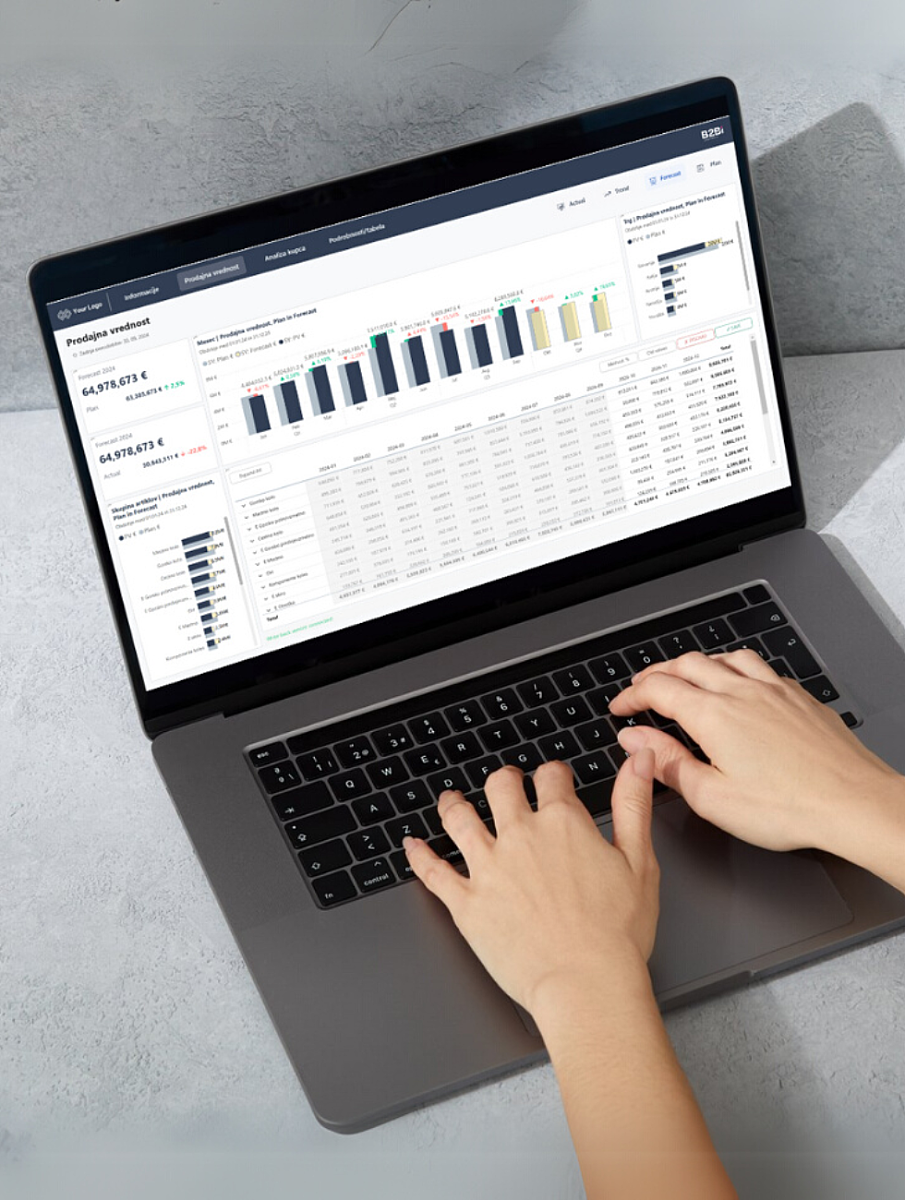The Future of Cash Flow Management

With carefully designed reports, you can get complete insight into your business data with just a few visualizations.
Cash flow management is one of the key tasks for any company, regardless of its size or industry. It is often said that cash flow is the "lifeblood" of a company—without proper control over inflows and outflows, liquidity issues can quickly arise.
At a recent webinar on cash flow, we introduced modern approaches to monitoring and forecasting cash flow using analytical tools such as Power BI and the planning tool PlanIn BI. This solution enhances transparency, automation, and collaboration among key stakeholders within a company.
Challenges in Cash Flow Management
During the webinar, we found that 58% of participants still manage their cash flow using Excel spreadsheets. This statistic, obtained through a participant survey, confirms that Excel remains the dominant tool for liquidity monitoring in companies. However, this method has numerous drawbacks that can cause financial planning difficulties.
Speakers highlighted the key challenges that companies face when managing cash flow in this way:
-
Incomplete or outdated data – Many processes in Excel rely on manual data entry, increasing the risk of errors and a lack of transparency in tracking inflows and outflows.
-
Limited flexibility in scenario adjustments – Companies often need quickly adaptable forecasts, which Excel does not efficiently support.
-
Delayed alerts on liquidity risks – Businesses frequently miss key warning signs of potential financial difficulties since Excel does not offer automated notifications for critical thresholds.
-
Poor communication between departments – Cash flow is often managed by a single person or a small group, making collaboration and financial decision-making alignment with other departments, such as sales and procurement, more difficult.
So, how can these challenges be overcome? One of the solutions is the use of modern analytical tools that enable automation and better oversight of financial flows.

How can advanced analytical solutions help manage cash flow?
At B2 BI, we have developed a modern cash flow forecasting model that enables automated analysis of inflows and outflows, scenario adjustments, and improved financial planning. The solution is based on a data warehouse and offers:
-
Centralized data management – Integration of data from various sources (ERP systems, banking data, sales forecasts).
-
Forecasting future cash flows – Statistical models calculate the probable payment dates of customers.
-
Scenario adjustments – The ability to simulate different scenarios (payment delays, extraordinary inflows, and outflows).
-
Enhanced liquidity transparency – Visualization of key indicators in real-time.
-
Automated alerts – Notifications when critical cash flow thresholds are reached.

The benefits of digital cash flow monitoring
As Rok Pirnat emphasized during the webinar, managing cash flow solely with Excel is time-consuming and prone to errors. A digital solution allows companies to optimize the process and avoid common issues.
By implementing an automated Power BI solution for cash flow management, companies can expect the following improvements:
-
Faster decision-making – Instant access to up-to-date data enables more informed financial decisions.
-
Reduced planning errors – Process automation minimizes the risk of manual mistakes and improves data accuracy.
-
Better predictability of business liquidity – Visualization of key indicators provides greater insight into future inflows and outflows.
-
Cross-department collaboration – Companies can integrate sales, procurement, and finance teams, improving comprehensive cash flow planning.
What does the future hold? AI and predictive analytics
While the current solution enables cash flow forecasting and monitoring, we are also developing more advanced functionalities using artificial intelligence and Microsoft Fabric’s comprehensive data platform.
As product owner Erik Fabjan pointed out, the future will rely on machine learning models that will predict customer payments even more accurately and optimize financial flows. Microsoft Fabric, as a data platform, enables better management and analysis of cash flow data, offering companies new opportunities for predictive analytics, integration of external credit ratings, and optimization of cash flow forecasting models.
Proactive Cash Flow Management
Modern analytical solutions not only automate time-consuming processes but also help companies gain a more comprehensive understanding of their financial situation. Accurate forecasts and better liquidity transparency can assist businesses in preventing financial risks and seizing growth and development opportunities.
Effective cash flow management is no longer just a trend but a necessity for companies that want to:
-
Monitor cash flow in real-time and react quickly to changes. Instead of manually collecting data and analyzing it with delays, digital solutions provide businesses with always up-to-date insights into their financial status. This enables faster and better-informed decisions.
-
Optimize financial forecasts and reduce uncertainty in decision-making. With advanced analytical tools, companies can better anticipate future inflows and outflows and prepare for potential financial challenges. Forecasting is based on real data and historical patterns, increasing the reliability of financial planning.
-
Reduce risks and improve company liquidity. Manual cash flow management often leads to errors and inaccurate calculations, which can cause liquidity issues. Digital solutions offer greater transparency over financial obligations and help companies identify potential risks in a timely manner.
-
Enable better collaboration between the finance department, sales, and procurement. Cash flow management is not just the responsibility of the finance department—it is also influenced by sales strategies, procurement decisions, and payment terms. Digitalization ensures that all key stakeholders within a company work in alignment and make decisions based on shared data.
How can you optimize cash flow with modern analytical solutions in your company? Book a free consultation with our experts and discover how Power BI can enhance your business decision-making.
